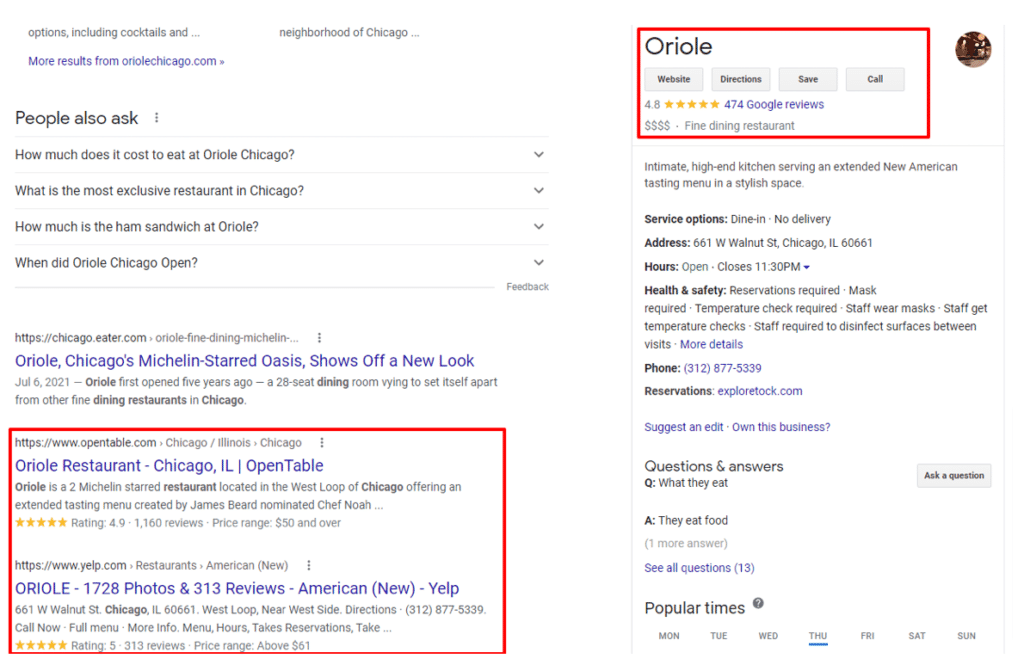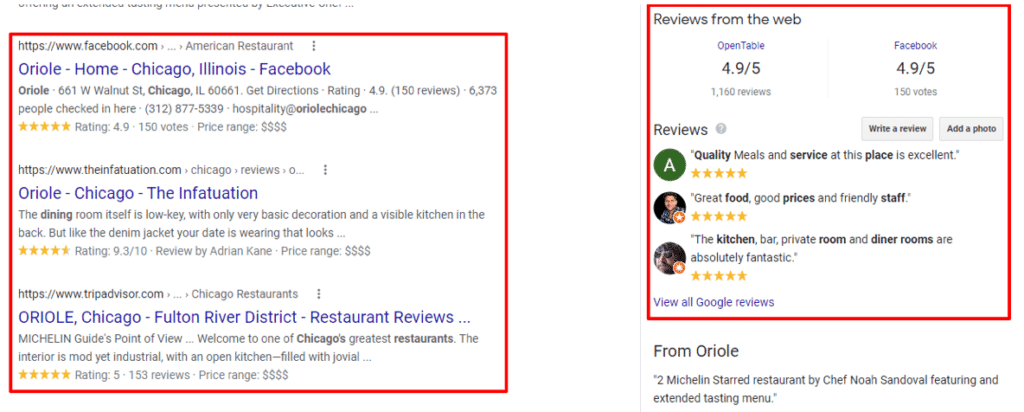Has review management changed?
Is it possible that online reviews have changed significantly in the last few years? It doesn’t seem that way; still, is it possible that we need to adjust the way we view the online review landscape?
Absolutely, in fact, it’s essential.
The pandemic of 2020 permanently altered the way online reviews work.
Importance of online reviews continues to grow
In the past, companies overcame negative reviews by throwing money at the problem — increased ad spending, boosts in brand equity, and other traditional marketing tools, etc.
These strategies are in decline.
Their effectiveness dies a slow death as the importance of online reviews continues to climb. Researchers from McKinsey found online reviews, and the pandemic, in particular, had a significant impact on customer behavior.
If a poorly designed product has a one-star rating and inspires scathing critiques from disappointed buyers, even the most exhaustive, well-funded marketing campaign won't improve sales. The old levers of brand equity, greater ad spending, or big promotions are simply less relevant in an age when consumers have almost perfect, painless access to infinite word-of-mouth feedback. The products themselves—both the quality and the associated customer experience—may become the most important marketing tool.
McKinsey’s research found that e-commerce experienced ten years of growth in the first quarter of 2020. That’s incredible on its own, but there’s something else that experienced astonishing growth is reviews.
One outcome, which may get overlooked amid the current turmoil, is the surge in volume of online ratings and reviews, which were 40 to 80 percent higher during the core pandemic months in 2020, compared with 2019. While this feedback has been available for years, the boost in e-commerce has taken its volume to new heights, giving it greater weight and credibility.
As the number of star ratings and reviews climbs further, and as more products are increasingly scrutinized online, buyers may base their purchase decisions increasingly on cues from other consumers rather than information from companies.
Research shows that tiny changes in star ratings can produce explosive growth — anywhere from 30 to 200 percent — these changes require a fresh approach.

What does this mean for you?
It means online reviews are more essential than they were before the pandemic. More customers have made the switch to working remotely. They’re more dependent on reviews, but they’re also drawing more data from the reviews themselves.
Today, customers are more focused on:
- The total number of reviews
- Aggregate star ratings
- Business and product/service objections
- Benefits
- Pros and cons
- Customer service responses
- Cross-platform review diversity (reviews on Google, Yelp, TripAdvisor, etc.)
- Business responses to reviews
Weren’t customers focused on this before?
Absolutely.
But the pandemic primed customer attention, so they’re hyper-focused on these variables, more so than they were in 2019. So what do you need to focus on in 2021 and beyond?
Review point #1: Online Review Diversity
Your customers want review diversity.
Mike Blumenthal, founder of GatherUp, surveyed 1,500 American adults about the review sites they would use when searching for a local business.
- 30 percent of them said they would visit the website
- 28 percent of them said they’d visit reviews using Google
- 18 percent said they’d read reviews elsewhere on the Internet
- 46 percent read reviews, but almost as many said they’d go elsewhere as to read them at Google
What about Google?
Review diversity is a local ranking factor; Google uses review diversity and the number of sites you’re reviewed on as a ranking factor in their local search algorithm.


This is challenging.
There are more than 180 review sites on the web today. How are you supposed to know which review sites are best for your business?
It’s easy.
Focus your attention on the mainstream review sites first.
Grade.us can help
Review point #2: Go mainstream, then niche down
Research shows four review sites are responsible for 88 percent of all reviews.
- Google 73 percent
- Yelp 6 percent
- Facebook 3 percent
- Tripadvisor 3 percent
Approximately 75 percent of new business comes from these four sites and Apple Maps and Bing Maps. Create, claim and optimize your profiles on the review sites mentioned above. Once you’ve built a stable review portfolio on these mainstream sites, niche down.
Choose one to two industry-specific or niche sites and build your portfolio there.
You’ll want to make sure that your profile is optimized. Any links or offers created should be platform-specific; set up your tracking URLs (via Google Analytics) so you can verify your best-performing review sites. Spend 80 to 90 percent of your attention on these review sites; spread the remaining 10 to 20 percent of your time across the remaining sites.
Rinse and repeat as needed.
Review point #3: Direct customer reviews
This sounds unethical, doesn’t it?
It’s as if I’m telling you to “coach” customers, coercing them into giving you a “glowing review.”
That’s not what I’m saying here.
Rather, I’m recommending that you ask customers pointed questions about their experience with you. This gives them the clarity they need to share their honest experience with others (whether that’s positive or negative).
This is important.
What if your customers don’t know what to say? What if they write a terrible review? You can decrease your odds of hurting the customer relationship by guiding customers with clear questions.
- What would have prevented you from buying our product (or service)?
- What did you find as a result of buying this?
- What did you like/dislike most about our product (or service)?
- What would be three other benefits to this product (or service)?
- Would you recommend this to someone else? Why?
See what I mean?
We’re asking for both the positives and the negatives. These questions give customers a clear track to follow. When customers answer these questions, they can’t help but share a believable, credible review that builds confidence, creates trust, and defuses objections.
Review point #4: Treat reviews as a customer feedback tool
Customer reviews are a rich data source.
Customers are willing to share intimate (and potentially embarrassing) information with you and your prospects publicly. With the right set of tools, you’ll be able to identify important trends, drawing important data from your clients.
Here’s a list of the valuable data you can extract from customer reviews.
- Customer desires, goals, and objectives
- Fears, frustrations, and problems
- Fuzzy, implicit, realistic, and unrealistic expectations
- Risk exposure and potential loss
- Demographic, psychographic, and ethnographic data
- Psychological triggers, barriers, and biases
- Customer perceptions
- Business, product, and service failure points
Here’s the best part.
You can use customer reviews to spy on your competitors. It’s an easy way to identify crucial trends, changes, and failure points in your competitor’s business.
Don’t miss this key point.
It’s about trends. Sure, an individual review can be helpful, but it’s not a good idea to re-orient your business around one. Focus on trends if you’re looking to gain a definitive answer on any key topic.
Review point #5: Customers expect reviews
Recent research shows 75 percent of businesses don’t respond to any of their reviews. Here’s the downside to all of this; 89 percent of consumers read local businesses’ responses to reviews. It’s an absolute disaster for most companies, and they don’t even know it.
How is this a disaster?
Well, let’s look at the data to find our answer.
- Companies that don’t reply to any reviews earn 9 percent less revenue than average
- Companies that respond to their reviews at least 25 percent of the time earn, on average, 35 percent more revenue
- People spend up to 49 percent more money at businesses that reply to reviews
- A 30 percent reply rate is the minimum for conversion growth to outstrip your competitors.
- When enterprise locations increased their reply rate for Google reviews from 12 percent to 32 percent of reviews, they achieved 80 percent higher conversion rates in local search than their direct competitors
- Over 55 percent of survey respondents expect a company to respond to their review within one day; 30 percent expect a response within three days
Customers expect a response to their reviews.
The better you are at responding to customer feedback (positive or negative), the more profitable your business will be. Thanks to the pandemic, customers are expecting a significant response from businesses. More than ever, customers want to see that your company is focused on them.
Responding to their reviews shows that you care about their feedback.
Review point #6: Continue performing as you did before the pandemic
Review management is an important marketing channel. It’s a good idea to take a proactive approach that provides your team with the must-have pieces needed to run your review management campaigns.
This includes:
- Review audits: Where does your review portfolio stand? Has it produced the results you expected (e.g., rankings, visibility, traffic, conversions, etc.)? You’ll want to verify that your review profiles are completed and optimized.
- Review generation: How do you generate a steady stream of positive reviews across multiple online review sites? How do you motivate customers to share their honest feedback without incentivizing them?
- Review monitoring: How do you respond to positive and negative reviews the right way? Which reviewers deserve your time and thoughtful response? Which ones should be avoided?
- Review marketing: How do you take your best reviews and elevate them to help you bring in new customers and celebrate your happy customers?
- Review analysis: Who’s responsible for addressing your customer’s macro, meso, and micro level complaints? If customers complain about fulfillment, service quality, or wait times — do you have a process in place to make the necessary changes and improvements?
Not sure where to start? Start with these comprehensive guides.
- How To Perform a Review Management Audit
- The Ultimate 2021 Review Management Checklist
- Your Review Management Agency Guide: The First 30 Days
- Your Review Management Agency Guide: The First 90 Days
Follow the steps listed in each of these guides; work through each step carefully as you work to grow your review portfolio.
Online review management has changed permanently
The pandemic of 2020 has permanently altered the way online reviews work. The old levers of traditional marketing — brand equity, advertising, and promotions are simply less relevant.
Customers don’t care anymore.
They’re focused today on infinite word-of-mouth feedback — your online reviews. Online spending and reviews grow in lockstep with each other; as remote work grows in popularity, reviews will increase in value. Buyers are basing their purchase decisions on cues that come from other consumers rather than you.
Use these changes for your benefit.
These changes are permanent; 2021 has given customers more power. The voice of the customer is more important than ever. Use these changes, and you’ll find explosive growth is just the beginning.









